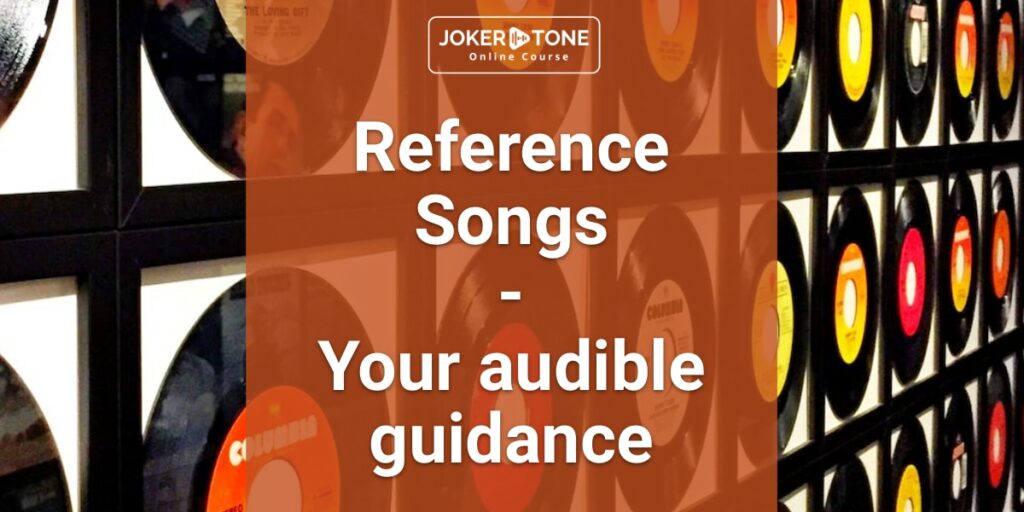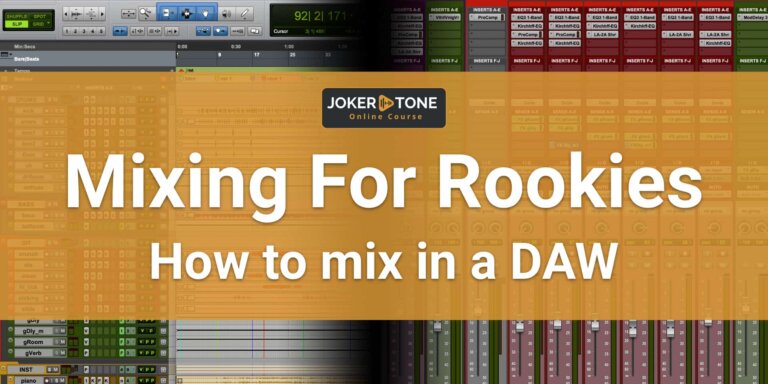What about a reference song for mixing
From the musical heart
Finding your way through the vast ocean of music production can often feel like navigating through a dense fog. However, amidst the uncertainty, there exists a guiding light—a reference song reference song for mixing. But what exactly is a reference song, and how can it illuminate the path towards creating music that resonates?
A reference song is a piece of art that inspires me and helps me “measure” my music. It’s a tune that hits home with me and sums up everything I want to accomplish with my music.
But what sets a reference song for mixing apart from the countless others? It’s its versatility—the ability to seamlessly transition from studio monitors to car speakers, from headphones to ear pods, without losing its essence. A reference song transcends the confines of specific audio setups, proving its merit across diverse listening environments.
Moreover, simplicity is key. A reference song doesn’t overwhelm with complexity; instead, it captivates with its elegance and clarity. It’s a masterclass in restraint, where every note is important, and every musical movement is important to the story.
Yet, perhaps the most crucial aspect of a reference song is its unattainability. It’s not a song to be replicated or mimicked, but rather a guiding star, illuminating the path towards one’s unique artistic expression. Attempting to copy it would be futile, for its essence lies not in its notes, but in the inspiration it ignites within.
As I work on my music, I always return back to the songs that inspire me and keep me going. It serves as my compass, my muse, and my constant reminder that within the vast expanse of musical possibility, there exists a singular melody that speaks directly to my heart.
In the end, a reference song for mixing isn’t just a song; it’s a reflection of our aspirations, a testament to our dedication, and a reminder that even in the darkest depths of uncertainty, music has the power to guide us home.
On the technical side
In the realm of home recording, producing, and mixing, the role of a reference song takes on a multifaceted significance. As I sit in my small studio, surrounded by cables, monitors, and mixing consoles, I rely on my reference songs as a template to replicate. It also serves as a trusted advisor in the intricate process of crafting my sound.
When it comes to production, the reference song for mixing acts as a sonic blueprint, guiding me through the labyrinth of soundscapes. Its balanced mix serves as a benchmark, offering insights into the interplay of instruments, the nuances of dynamics, and the spatial dimensions of the audio landscape. Even while I do it at specific milestones inside the mixing process, the reference songs assist me in bringing back clarity and balance.
In the realm of mixing, the reference song becomes my compass, guiding me to reach that sonic balance. My mix maintains the same level of clarity and depth in its tonal palette, spectral balance, and dynamic range. I use the punchy kick drum to the shimmering highs as a reference point to adjust my mix.
Yet, amidst the technical intricacies, the reference song serves a higher purpose—it inspires. It’s not merely a collection of sounds but a story, a journey that resonates with emotion and meaning. As I produce and mix my music, I draw upon its narrative arc, its emotive depth, and its expressive power, seeking to capture the same magic within my compositions.
In the end, a reference song for mixing is more than just a guide; it’s a mentor, a muse, and a mirror reflecting on the infinite possibilities of musical creation. As I continue to refine my art in the intimate confines of my home studio, I feel comforted knowing that, despite the technical hurdles and artistic uncertainties, I’m still on track. There exists a guiding light, a reference song for mixing, that leads me ever closer to realizing my musical vision.
Why a reference song for mixing will help you:
- Brings you back on track: When lost in effects or ideas, the reference song acts as a benchmark, guiding me back to clarity and coherence.
- Inspires experimentation: Its feel encourages trying new things, pushing creative boundaries to explore fresh sonic territories.
- Clarifies vision: Unsure how my song should sound? The reference song provides a clear sonic palette to shape my artistic vision.
- Provides visual feedback: Through A/B comparison of frequency ranges, the reference song aids in identifying and rectifying mixing issues.
- Facilitates learning: Trying to recreate a specific sound leads to invaluable lessons in sound design and engineering.
- Serves as an anchor: Even in imperfect monitoring conditions, the reference song offers stability and guidance in the music production process.
How to Choose a reference song for mixing
- Identify genre compatibility: Choose a reference song within the same genre as your mix to ensure cohesion and relevance in the mixing process.
- Consider mood and tempo: Ensure the reference song aligns with the mood and tempo of your mix. Mixing an acoustic ballad while referencing a fast-paced rock track can lead to discordance.
- Analyze key elements: Define what aspects of the reference song appeal to you, whether it’s the overall feel, specific frequency ranges, arrangement depth, or individual elements like vocals, drums, or bass.
- Limit references: Stick to one or two reference songs per mix to maintain focus and clarity. Multiple references can confuse and dilute your guiding principles.
- Embrace uniqueness: Remember that the reference song serves as guidance, not a template for replication. Allow your mix to maintain its individuality and originality.
How to work with a reference song for mixing as a guidance:
- Pre-mix reference listening: Spend a few minutes listening to the reference song before diving into your mix. This helps set the tone and direction for your mixing session, whether you’re setting up your equipment or settling into your workspace.
- Define mixing factors: Establish your understanding of terms like “depth,” “punch,” and “warmth,” and keep these concepts in mind as you work. Having a clear vision of these elements guides your decisions and helps you achieve your desired sound.
- Adjust volume levels: Reduce the volume of the reference track to match your mixing levels. Mastered tracks are often much louder than raw audio sources, so balancing the volumes ensures accurate comparison and prevents overcompensation in your mix.
- Check rough mix progress: After completing your initial rough mix, take a moment to compare it against the reference track. This step helps you gauge the progress of your mix and identify areas that may need adjustment or refinement.
- Draw inspiration from the reference: Identify and draw inspiration from elements in the reference track that resonate with you. Whether it’s a particular sound, arrangement, or emotion, incorporating these elements into your mix adds depth and character.
- Begin mixing foundation: Start your mixing session by establishing the foundational elements of your song. Continuously refer back to the reference song for mixing to ensure your mix aligns with your desired sound and vision.
- Check specific key elements: Before integrating specific elements into your mix, compare them against the reference track to ensure they fit seamlessly within the overall sound. Continuously reference back to maintain consistency and cohesiveness.
- Finalize automation: Before finalizing automation adjustments, conduct a thorough check-up against the reference track. This ensures that your mix dynamics and levels align with industry standards and meet your artistic vision.
- Verify final loudness: As you approach the final stages of your mix, use the reference song to verify the overall loudness and ensure it meets your intended goals. This last checkpoint ensures that your mix stands up to professional standards and delivers the desired impact.
Create a reference pool list of different genres
What kind of songs should be placed inside the pool
- Identify captivating elements: Listen closely to the reference songs and pinpoint the specific elements that captivate you, whether it’s the richness of the vocals, the crispness of the drums, or the warmth of the bass.
- Simplicity is key: Choose reference songs that aren’t overly complex, focusing on clear and distinct elements that you can incorporate into your mix with ease.
- Utilize specific elements: Select a reference song for mixing with identifiable elements that you can integrate into your mixing process, such as a well-balanced vocal presence or a tight, punchy rhythm section.
- Ensure compatibility: Opt for reference songs that work across various playback devices, ensuring that their sonic qualities translate effectively regardless of the listening environment.
- Seek recommendations: Explore reference songs recommended by trusted peers or industry professionals to gain additional perspectives and insights into effective mixing techniques and approaches.
How to keep track of the pool
Option 1) Playlist inside your music app
Create a reference playlist inside your favorite used music app like Apple Music or Spotify. This might be the fastest way to get the first overview.
Option 2) Use a spreadsheet
Create a spreadsheet with a table to keep track of the references you have in your arsenal with the following key points:
- Song name
- band
- (Album)
- genre (rock, pop, indie, classic rock, modern rock,…) that fits to your own
- Tempo (very slow, slow, mid-tempo, fast, very fast)
- Feeling/Mood (happy, sad, positive, dark, open, …)
What do you like about the overall sound? (punch, wide, depth, smooth, layout of the band)
What key elements do you like? (punchy snare, distortion of the bass, vocals reverb/delay sound,…)
- Active/Archive (if you change the songs inside that list, you don’t have to delete older ones if you need them any time again, when you miss them for a reason).
Option 3) Use a database app
Use a small database app for instead of the table to get a better overview and find the sound you require as a reference, then with a spreadsheet.
- I use the Ninox app for my reference song pool
- Easy to use, no more tables and single documents
- Find that what I require fast without the hassle of Excel or spreadsheets.
Check and change your reference list
- Discover new emotions: Be open to a reference song for mixing that evoke fresh feelings or emotions not previously explored in your mixing process, introducing novel sonic landscapes and textures to your repertoire.
- Embrace unexpected discoveries: Embrace the unexpected as you stumble upon new reference songs that surprise and resonate with you in ways you hadn’t anticipated, leading to exciting and unforeseen creative directions.
- Evolution of musical taste: Recognize that your musical taste is dynamic and may evolve, prompting you to seek reference songs that reflect your current artistic sensibilities and preferences.
- Regularly revisit your pool: Take the time to revisit and update your reference songs pool at least once a year or whenever new inspiration strikes, ensuring that it remains relevant and aligned with your evolving creative vision.
- Manage your reference library: Regularly review and manage your reference song library, archiving or deleting tracks that no longer resonate with you or serve a purpose, while also remaining open to revisiting archived tracks if they become relevant again in the future.
When a reference song for mixing miss the point
- Trying to replicate a reference track exactly can feel overwhelming. There’s a lot of technical stuff involved, and the methods used in music production can be pretty complicated. But instead of seeing it as a strict set of rules, think of it more like a helpful guide. It can point you in the right direction and inspire you to find your own unique sound.
- Mixing elements from different reference tracks might sound like a good idea, but it can actually make your mix sound messy and unfocused. It’s much better to have a clear vision of what you want your mix to sound like before you start. This way, everything will fit together nicely, like pieces of a puzzle.
- It’s important to remember that not all mixing techniques work for every genre of music. Each track has its own unique characteristics, so it’s significant to be selective about which techniques you choose to apply to your mixes.
- Constantly comparing your mix to a reference track can be counterproductive. While it’s good to check in now and then to make sure you’re on the right track, constantly obsessing over it can stifle your creativity and prevent you from fully exploring your own unique ideas.
- Don’t be discouraged if your mix doesn’t sound exactly like the reference track. Every artist has their own unique style and sound, and it’s essential to embrace that uniqueness rather than trying to force your mix to sound like something it’s not.
- If your mix ends up sounding entirely different from the reference track, don’t panic. Instead, see it as an opportunity to experiment and explore new sounds and ideas. After all, the most innovative and groundbreaking music often comes from pushing the boundaries and thinking outside the box.
Conclusion
Using a reference song in your mixing process is like having a roadmap for your musical journey. It guides you through the complexities of blending sounds and helps you understand how different elements work together. However, it’s important to remember that reference tracks are not meant to be copied; they’re there to inspire and guide you in finding your own unique sound.
By keeping a curated list of reference songs, you can track your musical tastes and see how they evolve over time. This helps you stay focused and keeps you inspired as you explore new ideas and techniques in your music production journey.
So, embrace the guidance that reference tracks provide, but always stay true to your own creativity and vision. Let them inspire you to create something fresh and unique, and watch as your music grows and evolves in exciting ways.
LINKS
The website „mastering the mix“ has in very interesting blog article that show a nice selection of reference songs from different genres with visual insights of the panning and frequency structure. Have a look to get a nice new idea on how to view your own reference songs:
Mastering the Mix – Best reference track for all genres
If you have further questions or want to get in touch, please consider using the  contact form.
Niels from Joker Tone Course




